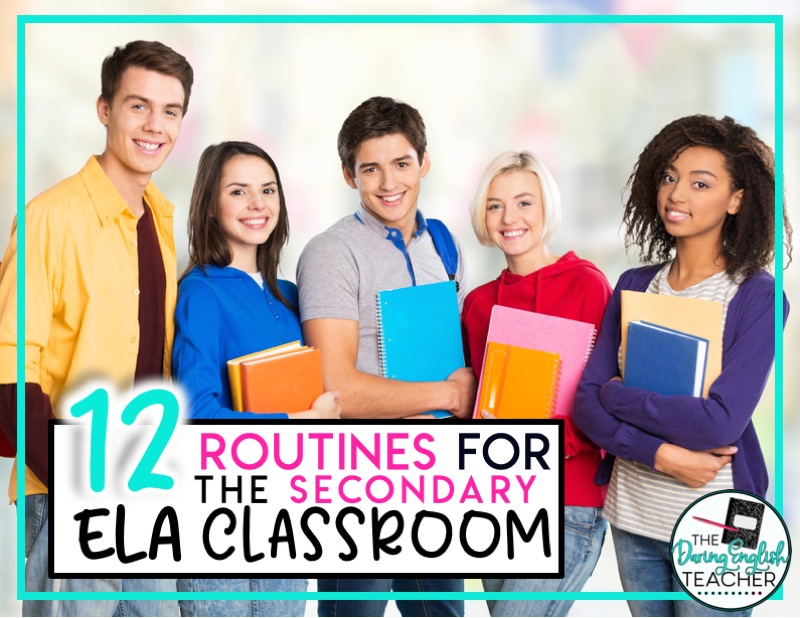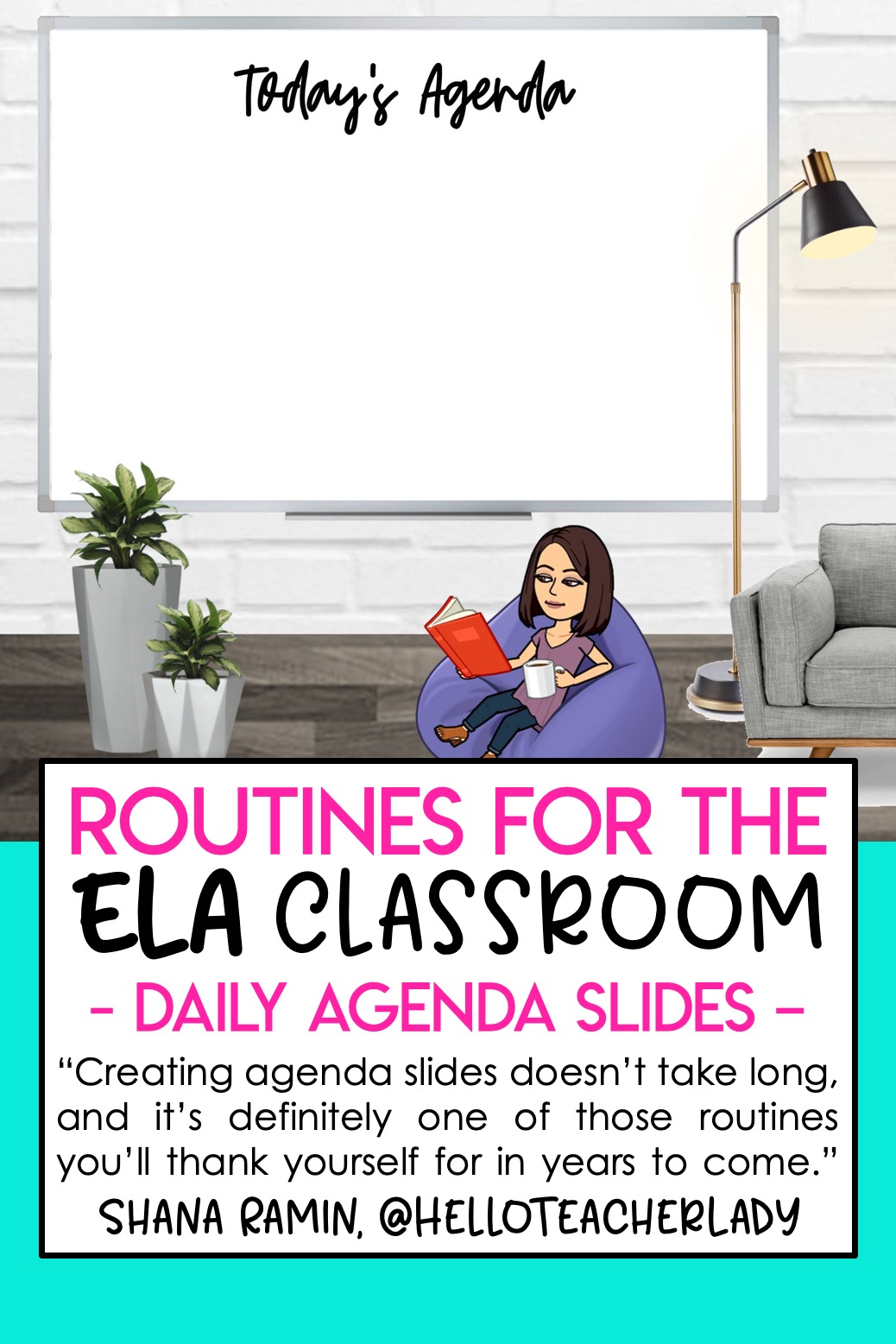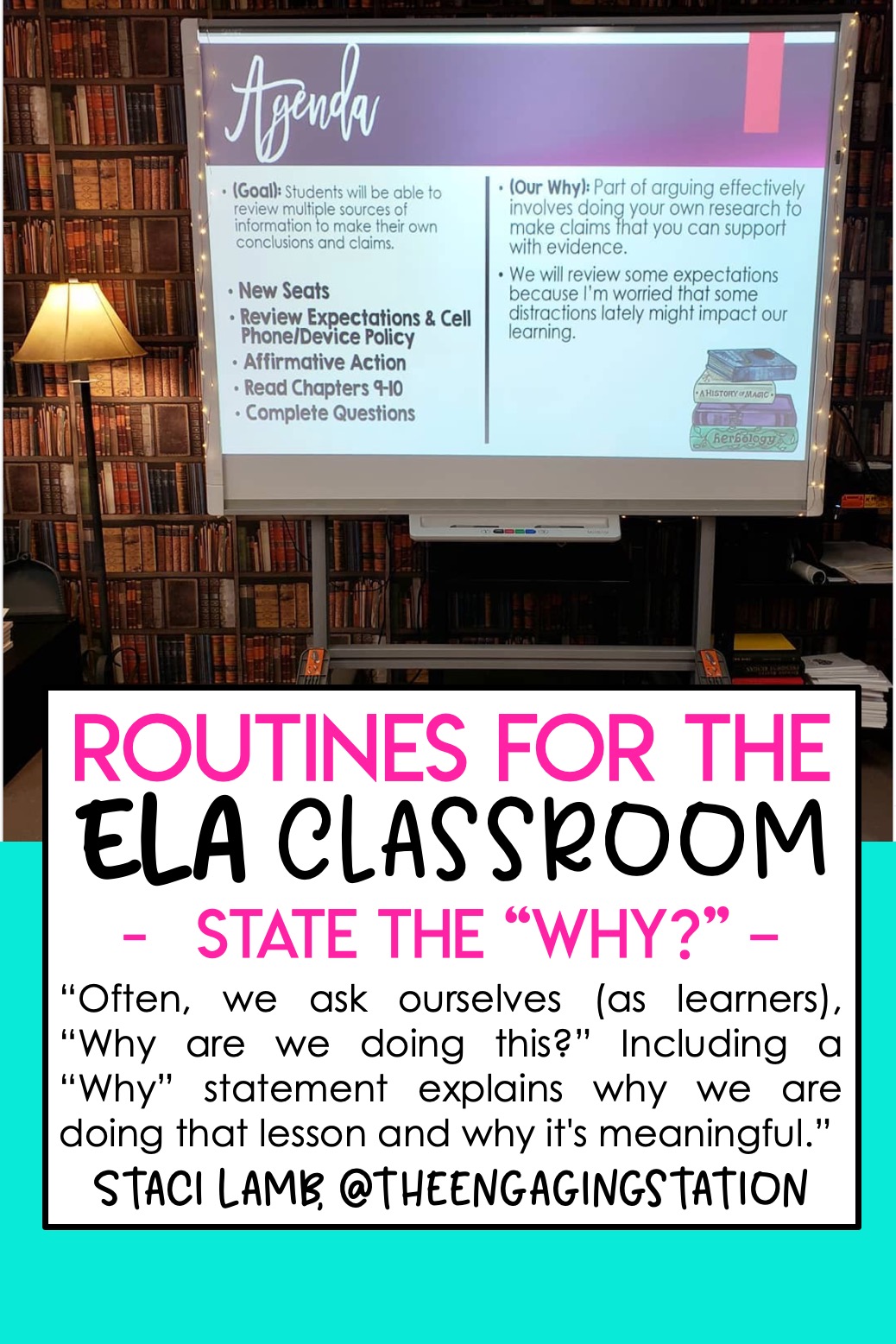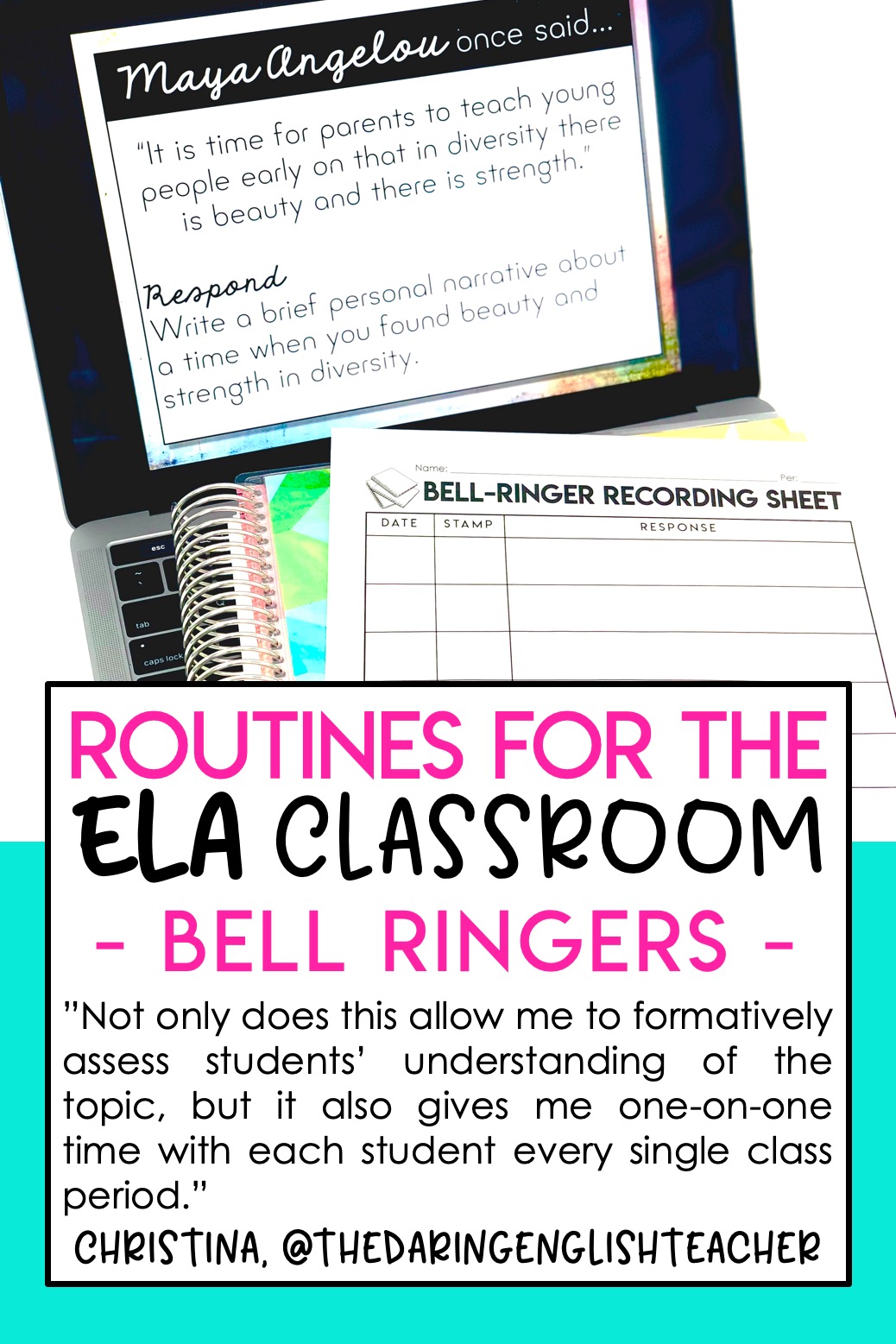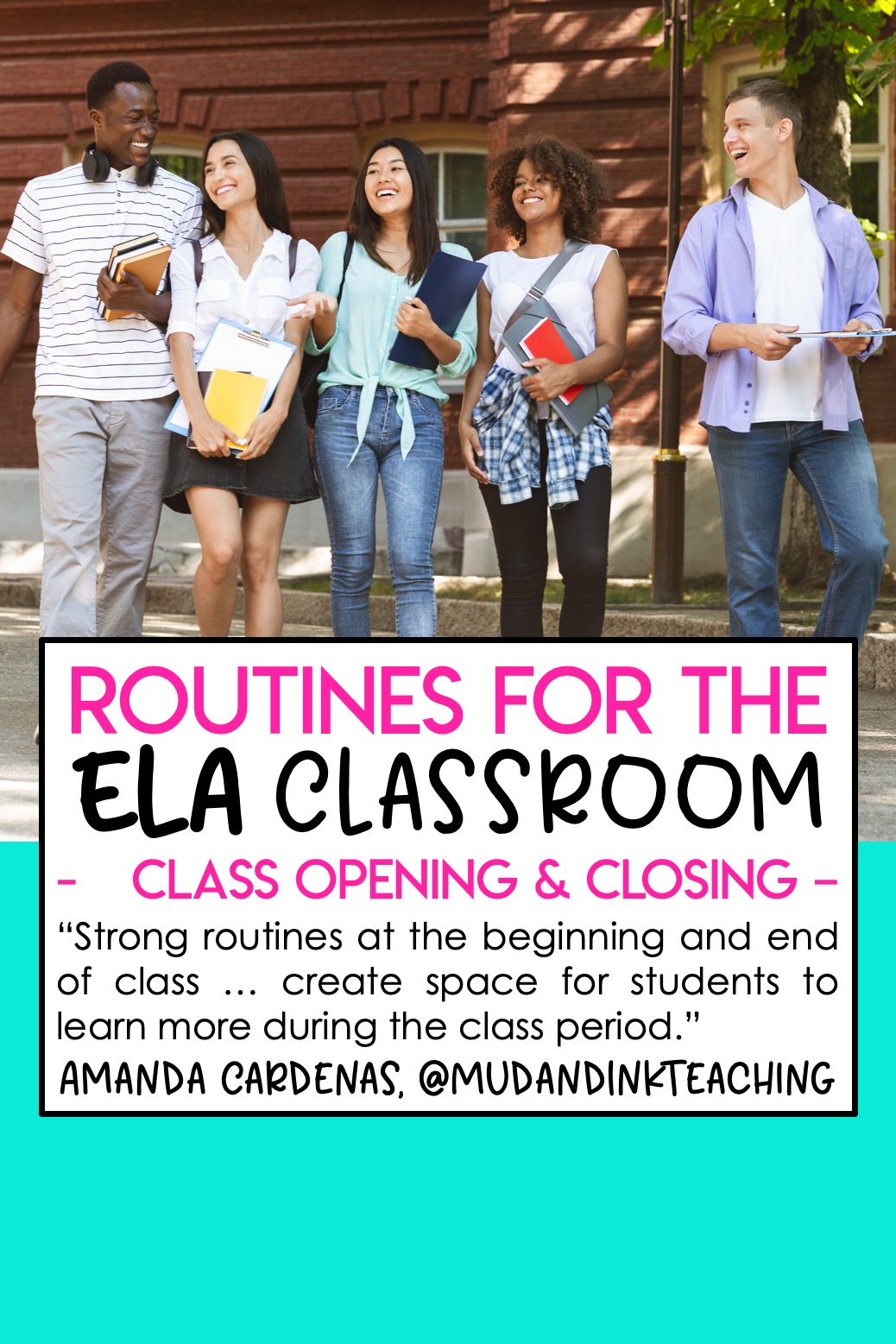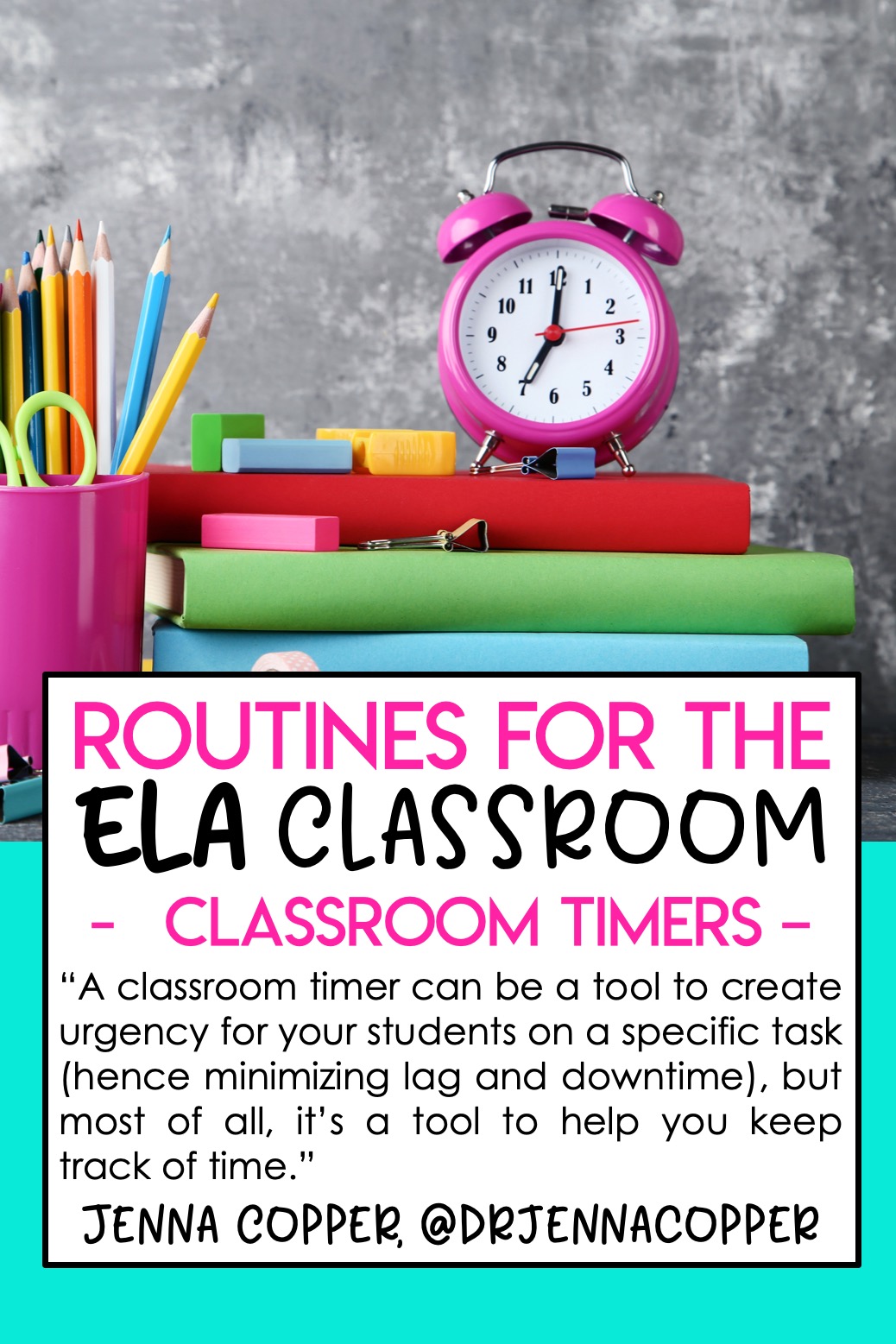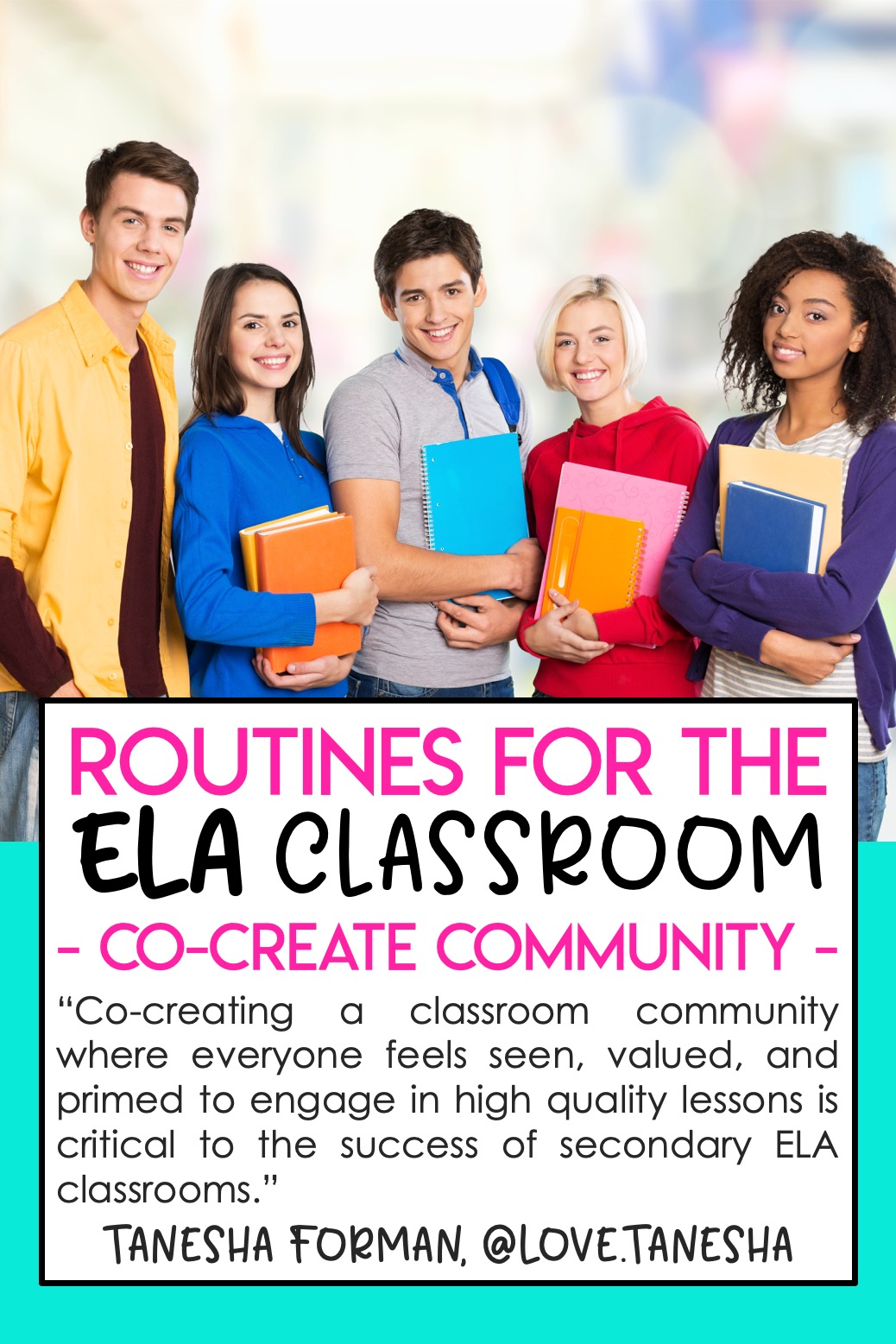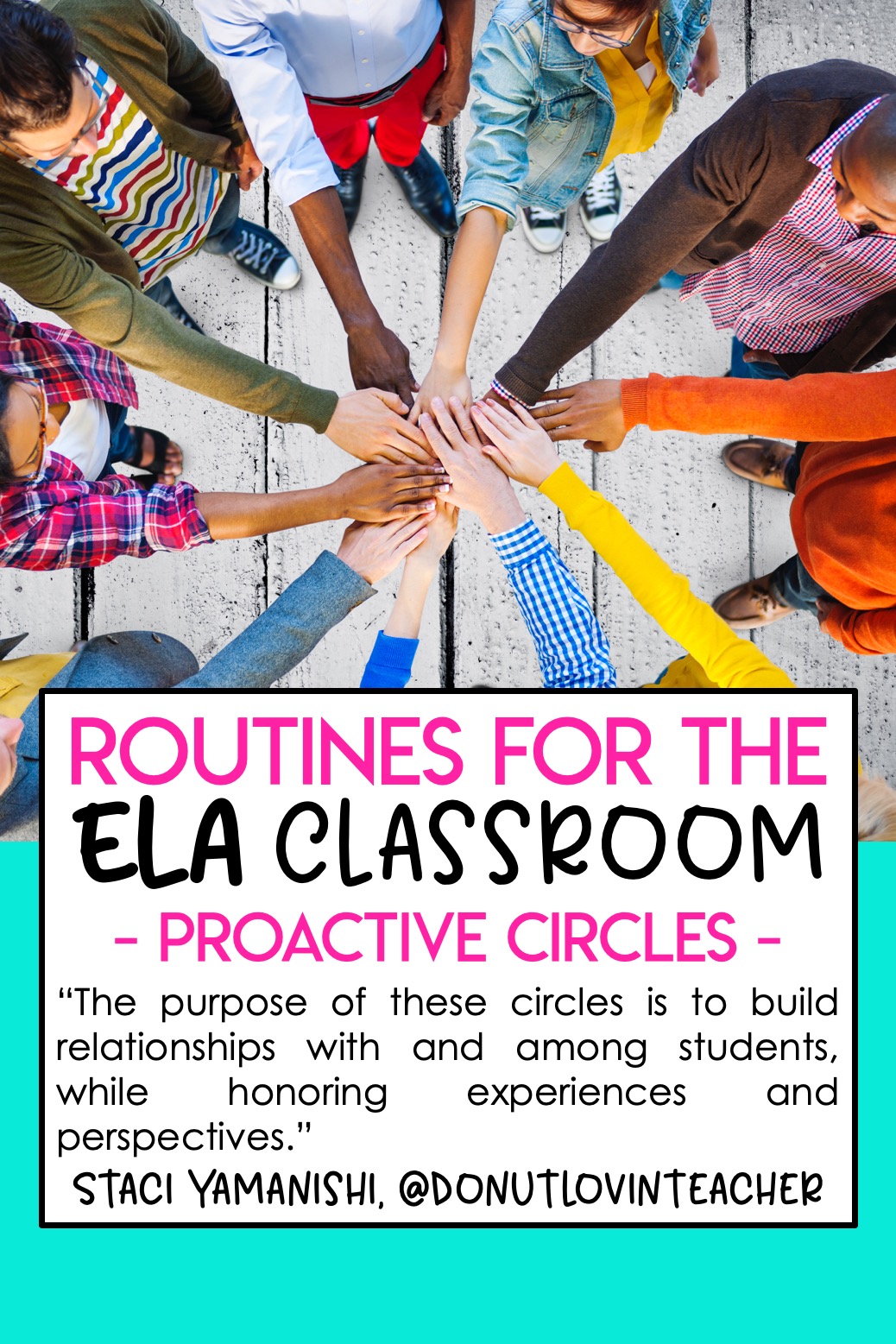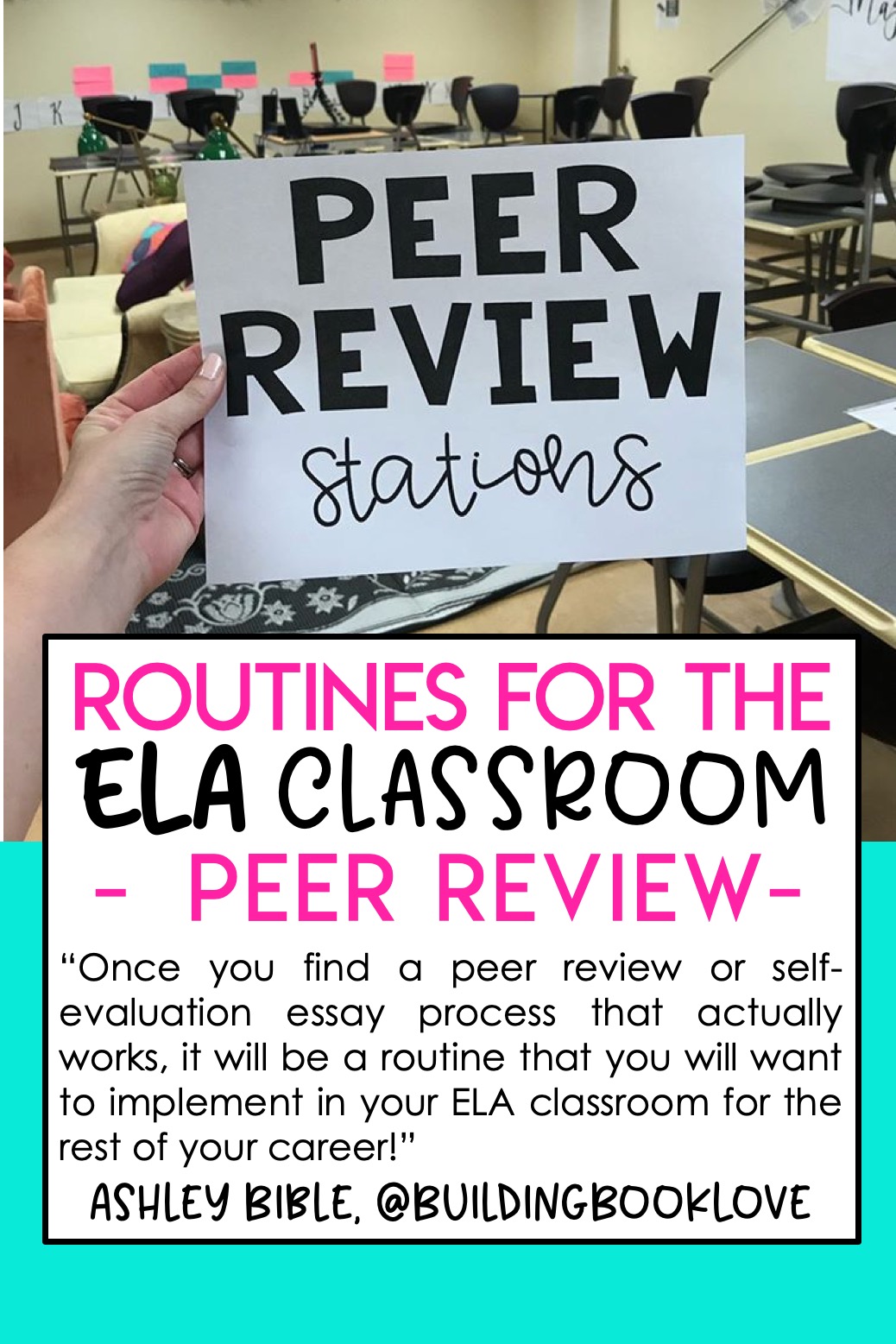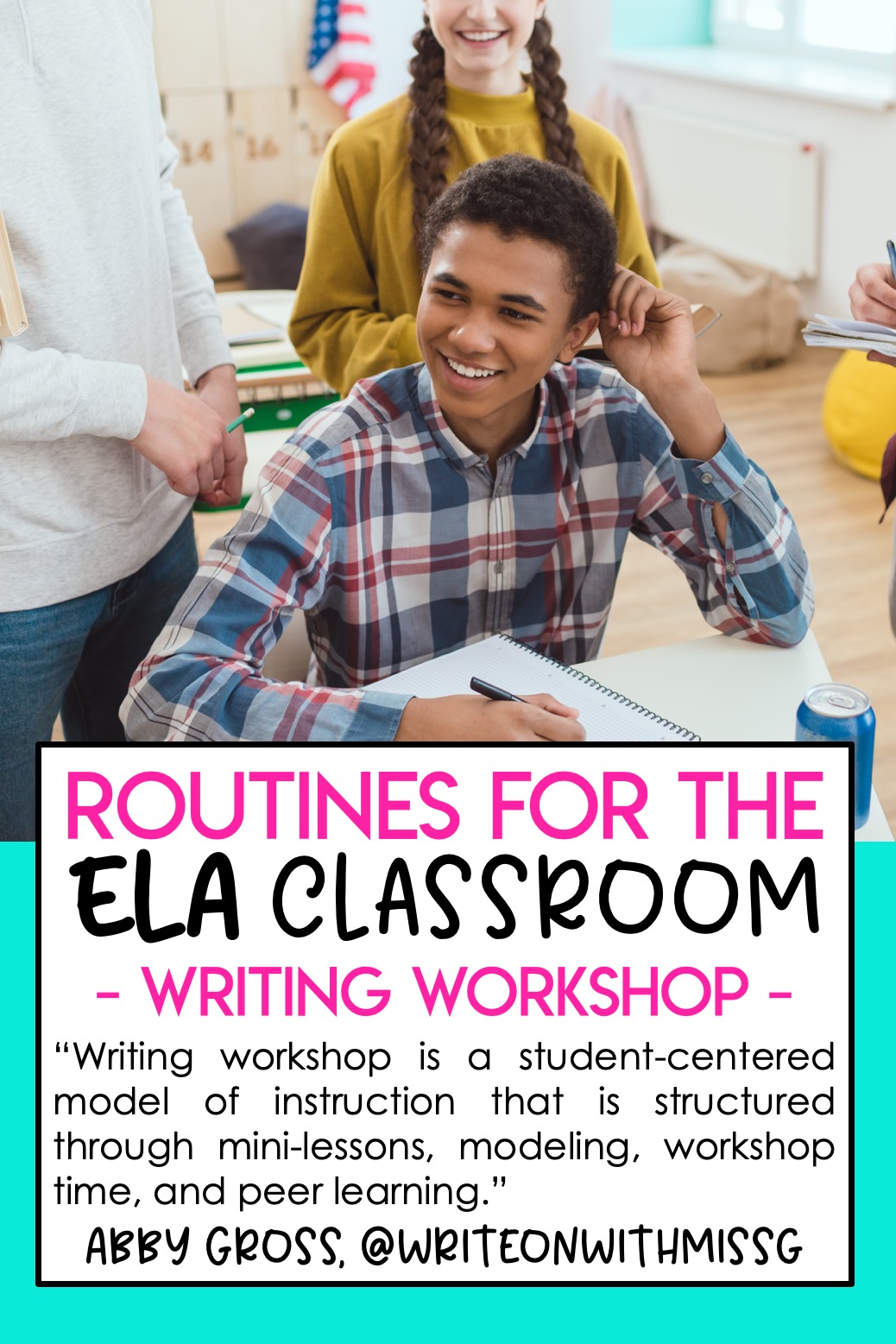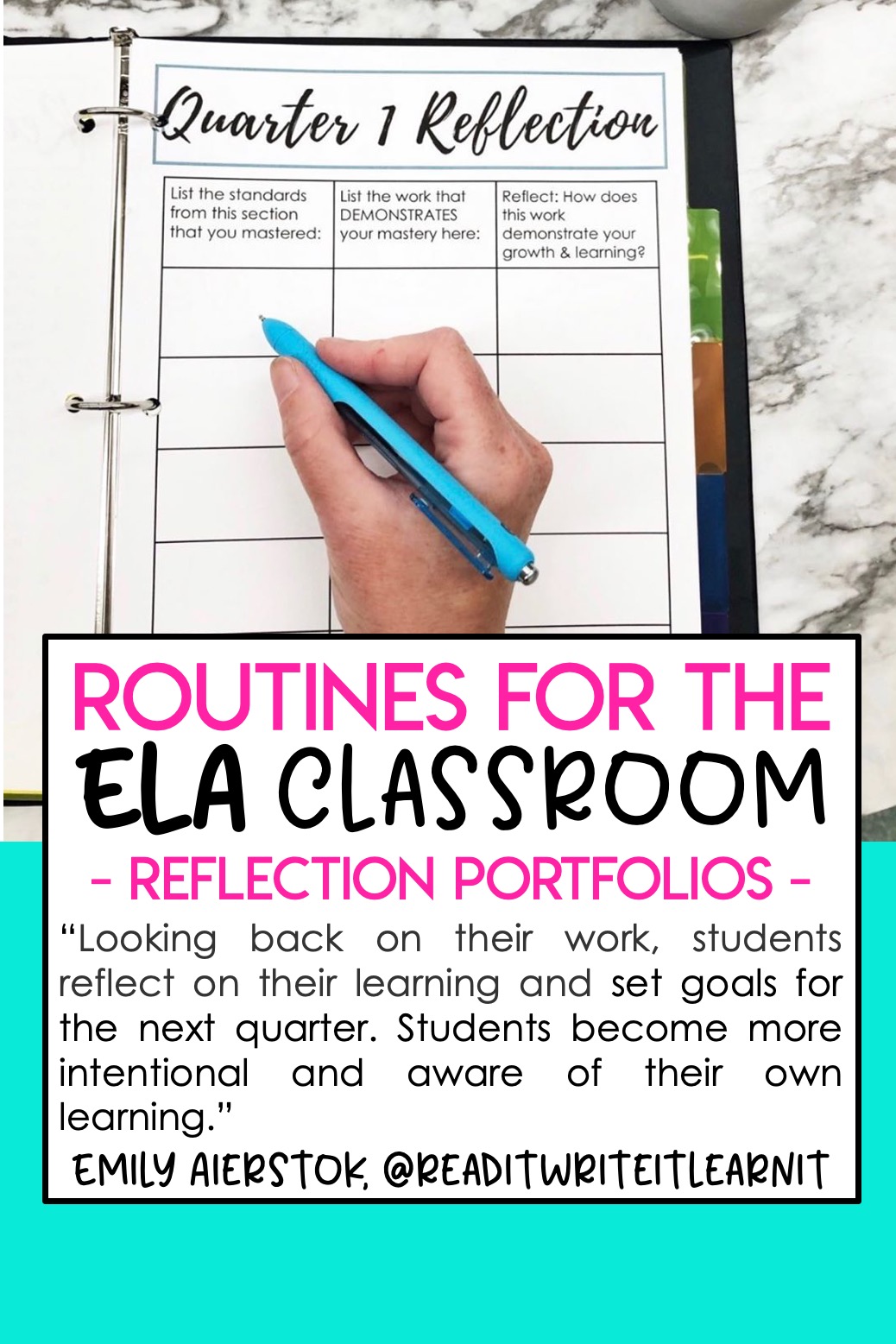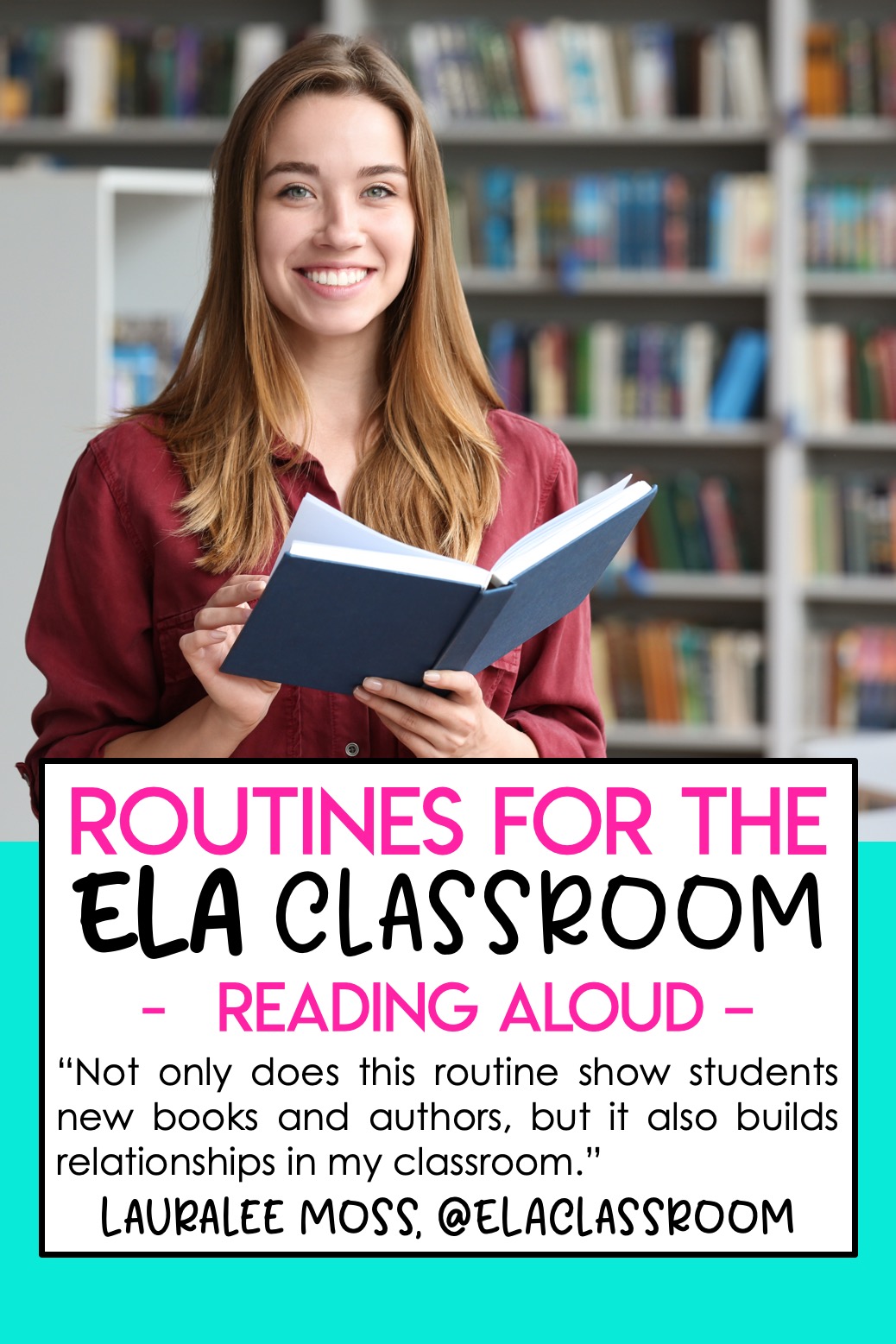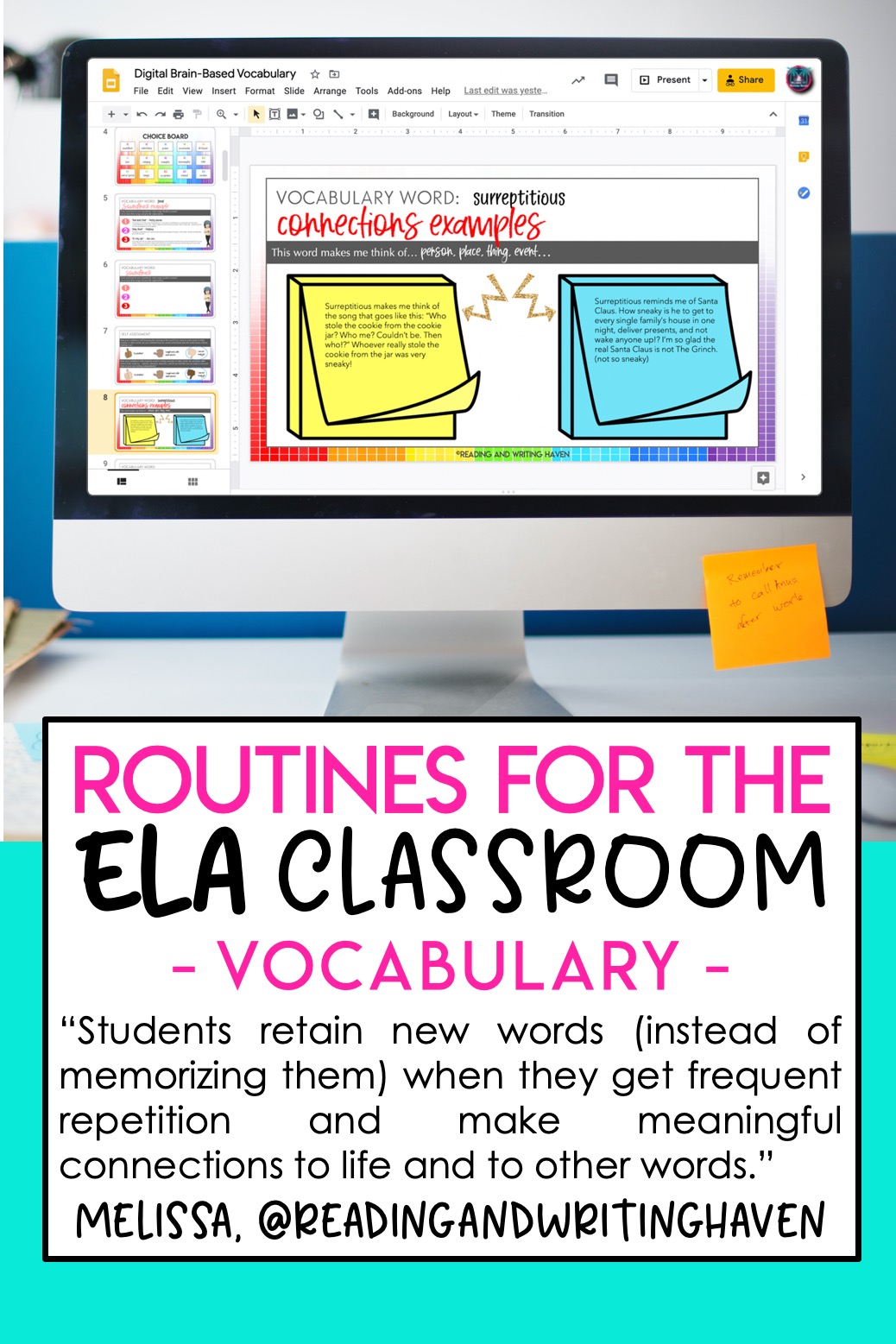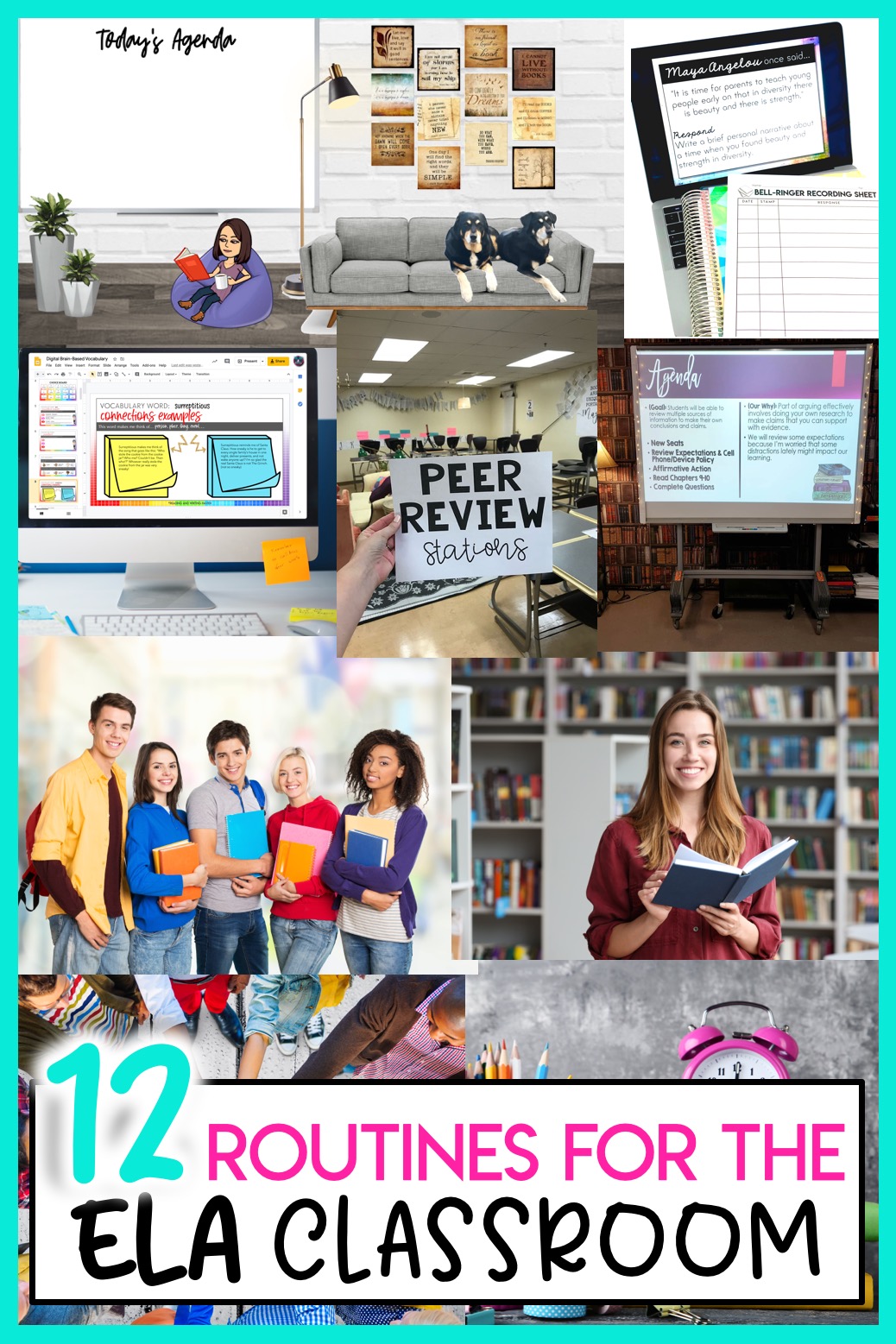One of the first things teachers learn in their pre-service teaching classes is the importance of establishing effective classroom routines and procedures for the middle school and high school classroom. Here is a look at 12 effective daily classroom routines to consider for your middle school ELA or high school English classroom.
Essential Classroom Routines
According to Shana Ramin from Hello, Teacher Lady, daily agenda slides are one of her classroom’s most valuable tools. She started creating daily slides a few years ago to keep track of lesson materials and make it easier for absent students to see what they missed. At first, she only posted them on Google Classroom — students could log on and access the information and materials they missed in one convenient place — but Shana quickly realized how beneficial it was to display the slides for students at the beginning of class as well. Students would walk into class knowing exactly what they needed for the day and were able to write down important reminders/dates in their planners before class even started.
With the sudden transition to distance learning due to COVID-19, Shana says that her daily agenda slides became even more of an essential classroom tool. In an end-of-year survey, many students commented explicitly on how much they appreciated having the slides as a single reference point while working from home.
Creating agenda slides doesn’t take long, and it’s definitely one of those routines you’ll thank yourself for in years to come. You can browse Shana’s collection of daily agenda slides here, or learn how to make your own Bitmoji slides on her blog here.
How do you make your lessons meaningful? One small routine Staci from The Engaging Station started doing last year is adding a “Why” section to her agenda slides. You can see some examples here and here.
Often, we ask ourselves (as learners), “Why are we doing this?” Including a” Why” statement explains why we are doing that lesson and why it’s meaningful. It’s something Staci learned about in her grad class on equity and excellence with a focus on vision and mission statements.
Including a “Why” statement also helps us reflect on our lessons and understand why we are teaching certain content and skills. Through this lens and introspection, we can also see who we are centering in our lessons and who we are excluding. Discussing the “Why” with students can be incredibly powerful to hear their perspectives on what should be included in our curriculum as well.
One of Christina’s (The Daring English Teacher) favorite classroom routines is the use of a daily bell-ringer activity. By starting every single class period with a bell-ringer, my students quickly get into the habit of starting their work at the start of class. It is one of the classroom routines that she establishes at the beginning of the school year. Plus, I use this time to take and submit attendance and answer student questions.
In Christina’s classroom, as her students are completing their bell ringer work, she walks around and stamps each students’ paper to mark their work as complete. This routine allows her to assess students’ understanding of the topic, and it also gives her one-on-one time with each student every single class period. This bell ringer routine helps her build strong relationships with my students. You can read more about this strategy in this blog post.
When it comes to assigning a bell-ringer in the secondary ELA classroom, the possibilities are endless. Christina likes to assign a variety of bell-ringer activities to help students build their skills. For example, when students work on sentence combining bell-ringers, they improve their writing skills. Another effective bell-ringer strategy is to have students work on literature-related bell ringers that are related to your lesson.
When teachers start their careers, they’re taught to focus on classroom management and content. What my friend Amanda from Mud and Ink Teaching has found, however, is that strong routines at the beginning and end of class set up a classroom environment that prevents the kinds of behaviors that need to be “managed” and create space for students to learn more during the class period.
To open class, Amanda uses a simple bell work routine that is flexible for the time of year and type of unit that your class is working on. Bell work can consist of vocabulary study, watching and reacting to YouTube videos, listening to and reacting to a poem, or any other type of quick content that students can independently work on. That’s the key: independence. In Amanda’s classroom, the first 5-7 minutes are silent and focused on the work so that she can do some key things: take attendance, check-in with a student in the hallway, or even send off a quick email about a situation from the previous class period. Training students at the beginning of the year to do this work instead of crowd around the teacher desk or take that entire time to get settled down takes work, but Amanda has a blog post that’s got you covered here.
To close the period, a fancy routine isn’t required, but structurally, there needs to be something in place that signals closing. Amanda has two lines that she says with her kids at the end of the period: “It’s time to pack up” and “Have a great day!”. The first command about packing up is the ONLY point at which students can start with that zipper sound – beforehand is an oh no no! You might try using a wireless doorbell to signal when it’s time to pack up or using a favorite catch-phrase that the kids say together at the end of the period. What’s important is that every class period closes together rather than simply running endlessly into the bell.
Between interruptions, bad breaks, multi-tasking, and general challenges that come with teaching every day, it’s easy to lose track of time during a lesson. That’s why Jenna Copper from @drjennacopper loves using a simple classroom timer. A classroom timer can be a tool to create urgency for your students on a specific task (hence minimizing lag and downtime), but most of all, it’s a tool to help you keep track of time. It’s easy to lose your sense of time when students are working on a task and you are answering questions or helping students one on one.
It’s a great way to “budget” the time in the classroom. Your timer can be a physical timer or a digital one. I like to project my timer on the Smart Board so we all can see the timer at once. You can find timers on YouTube or www.online-stopwatch.com. Keep in mind, they aren’t perfect. If you have anything else to project on the Smart Board, you must switch back and forth between the screens, and YouTube has some annoying ads you’ll need to filter.
If you’d like more information on workarounds and an even simpler solution, check out her blog post here.
Classroom Routines to Establish Community
Co-creating a classroom community where everyone feels seen, valued, and primed to engage in high-quality lessons is critical to the success of secondary ELA classrooms. Students have many emotions and life circumstances that they are balancing, and sometimes need a window to be celebrated and to share concerns. Each year, Tanesha from Love Tanesha, prioritizes developing and maintaining relationships with quick class meetings. These meetings provide opportunities for students to give feedback on lessons, share important information, and celebrate one another.
Given the often tight class structure of the ELA classroom, Tanesha leverages surveys (example) via Google classroom that students have time to complete at the end of each lesson. The survey provides space for students to share if they need a check-in, feedback they have about the class, and/or a shout-out for a teammate. Tanesha starts the meeting with shout-outs, and rotates between bringing a feedback point to the group and highlighting trends in work. Tanesha prioritizes maintaining a quick class meeting throughout the year so that students always have a way of advocating for their needs.
You may have heard of Restorative Justice and even tried implementing some or all of its practices in your school or class. Nurturing relationships is an important aspect of Restorative Justice, and one that Staci over at Donut Lovin’ Teacher says is an important routine for any classroom. She does this 1-2 times per week through Proactive Circles. In her class, they refer to them as Community Circles though she’s also heard similar structures called Council or Talking Circles.
The purpose of these circles is to build relationships with and among students while honoring experiences and perspectives. This circle time (and yes, you actually need to sit in a circle) can be a quick twenty minutes, or a full hour class period. This time can be used for ‘get to know you’ activities and weekly check-ins surrounding student successes or needs. It can be used to share ideas and concerns about academic and social needs, or as a way to dive into topics around race and privilege. It can even be the space to address and process events impacting the community. When you set these structures up for your students, you won’t have to ask yourself how or when to talk about the hard topics; you’ll already have a space for students to share what they are experiencing safely.
You can read more about how Staci structures her proactive Community Circle time with students and grab some posters to set up the intentions of this time. If you’re looking to learn more about Restorative Justice, she recommends you experience it for yourself with her friend David over at Amplify RJ.
Classroom Routines to Improve Writing
Ashley Bible at Building Book Love used to think peer review days were a waste of time. Though students were reading and commenting on each other’s essays, their writing showed no real improvement. Desperate for a solution, Ashley completely revamped her peer review process and now vows to never grade another essay until students have completed these game-changing steps. You can read about the essay routine here: 5 Essay Grading Tips for Grading Essays Faster and More Efficiently and grab the FREE and editable peer review stations here: Peer Review Stations.
Once you find a peer review or self-evaluation essay process that actually works, it will be a routine that you will want to implement in your ELA classroom for the rest of your career!
Teaching writing is challenging, but with the right structure and routines, it can be much more manageable for both teachers and students. For Abby at Write on With Miss G, embracing the writing workshop model was a game-changer in her classroom. Writing workshop is a student-centered model of instruction that is structured through mini-lessons, modeling, workshop time, and peer learning.
Here’s what it looks like in Abby’s classroom:
1. Mini-Lesson: First, the teacher delivers a targeted mini-lesson on a skill or part of the writing process. This may involve mentor texts and/or modeling a technique.
2. Workshop: After the mini-lesson, the teacher gives students time to write. Ideally, students should apply what they have just learned to their writing. During this writing workshop time, the teacher confers with students.
3. Exit Ticket/Sharing: At the end of the writing workshop, the teacher checks in with each student through an exit ticket and/or gives students time to briefly share their successes or questions with a peer or the whole class. Abby loves to use Google Classroom questions for the “exit ticket” component.
Because peer learning is an important part of the workshop model, Abby also loves to incorporate multiple opportunities for peer review, such as peer feedback speed dating.
For more information on how Abby teaches writing with Google Classroom, check out her blog post here.
Academic Classroom Routines
Emily Aierstok of Read it. Write it. Learn it. uses standards-based reflection portfolios all year long to help solidify student learning. As ELA teachers with so much content to cover, we don’t often have time for students to reflect on their learning in our classrooms; however, reflection and metacognitive skills have been proven to be one of the most effective learning techniques we can implement to solidify student learning. The research of John Hattie revealed that the effect size for teaching metacognitive strategies is 0.69, making it one of the best teaching strategies.
Emily uses standards-based portfolios to give students the tools they need to reflect on (and organize!) their work. Work is filed in binder portfolios by standard. For example, Emily has her 7th grade students organize their work into one of six sections: writing arguments, writing informative essays, writing research, writing narratives, reading literature, and reading informational texts. More specific standards are listed on cover pages for each section.
Emily does not cover every standard every quarter. For example, the focus first quarter might be informative writing, so students are only filing their work in that section. They might be reading both literature and informative texts connected to their writing, so they would file reading responses in those sections.
At the end of each quarter, students add the work evidence to “prove” their learning. Looking back on their work, students reflect on their learning and set goals for the next quarter. Students become more intentional and aware of their own learning. Learn more about Student Reflection Portfolios here.
A routine my secondary students hold me to is reading aloud to them every Friday. Earlier in the week, students will question what I’m reading to them for First Chapter Friday. Not only does this routine show students new books and authors, but it also builds relationships in my classroom.
You can download my FCF starter kit for free, and in it, you’ll find cards for students to suggest books. As we continue to experiment with different books, authors, and genres, students show me more of themselves as readers. This routine accomplishes more than sharing stories. Students look forward to this routine, to growing with their teacher as readers.
At the heart of the English Language Arts classroom, you’ll find words. Melissa from Reading and Writing Haven believes that teaching students to LOVE learning new words can positively impact students’ attitudes about reading, writing, and language.
To cultivate a deep appreciation for vocabulary, Melissa recommends creating a daily vocabulary routine. Whether we are introducing a new word a day, adding connections to a word wall, or using brain-based practice strategies a couple of minutes each day, vocabulary can be interactive and engaging.
Students retain new words (instead of memorizing them) when they get frequent repetition and make meaningful connections to life and to other words. We can add our vocabulary practice to bell-ringers, learning stations, flipped lessons, or transition activities.
Reading and Writing Haven has written a How-to-Teach Vocabulary Manual for middle and high school teachers, and she offers a plethora of differentiated vocabulary activities to help spark students’ curiosity about new words.

